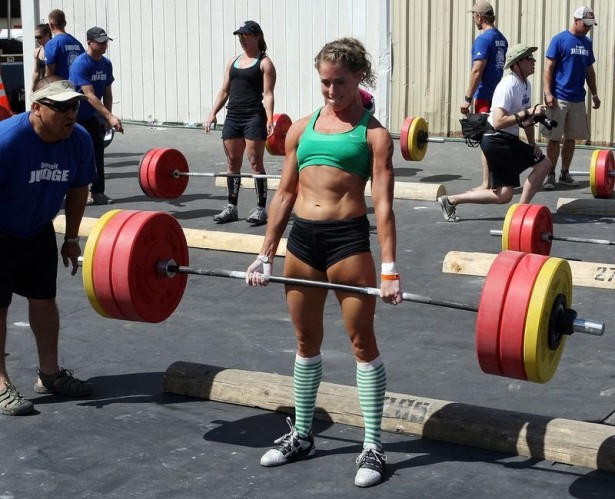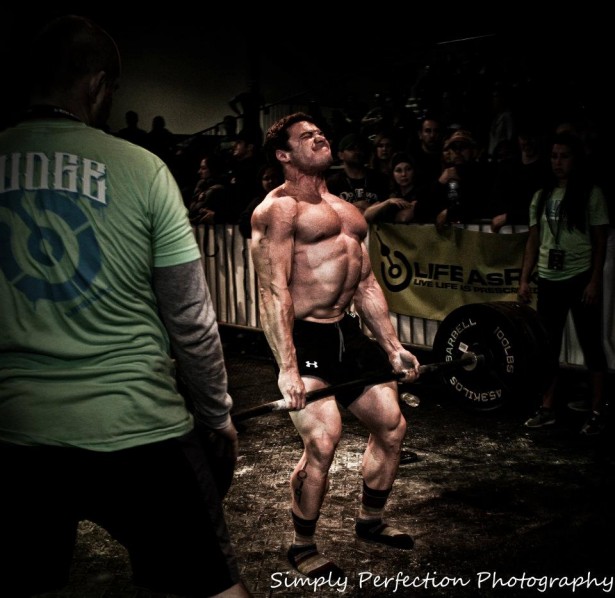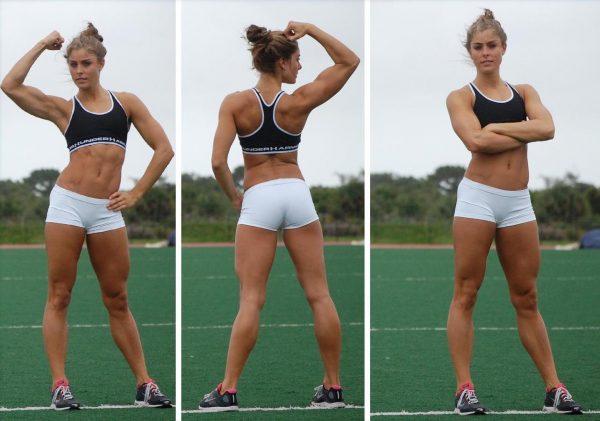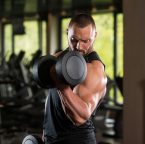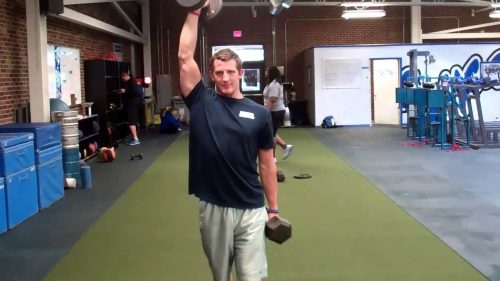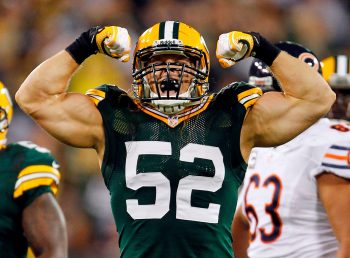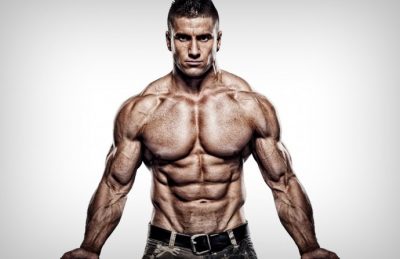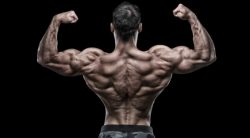The deadlift is the often-overlooked weight lifting exercise that is actually one of the best ways to burn fat and build muscle. It is a strength builder that body builders and powerlifters use to gain lean muscle mass and improve their strength.
The Benefits of Deadlifting
One of the reasons that the deadlift works so well is because it is a compound move that involves many body parts, including the hamstrings, quads, glutes, abs, traps, lower back, triceps, biceps, lats, calves and grip. Working all of these muscles with a sizable amount of weight on the bar is an effective way to build your strength.
Deadlifting requires physical and mental strength. Convincing yourself you can make the lift and beat your personal record takes a lot of mental power. The benefits of the deadlift are worth the effort though. Aside from discipline and self-confidence, deadlifting improves stability, posture, flexibility, and your cardio level.
Why People Are Scared To Deadlift
The main reason people are scared to deadlift is the risk of injury. It’s not that deadlifting is a dangerous exercise, it’s just that you need to use proper form every time. It’s especially important to perfect your form and have a spotter before you start deadlifting 300, 400, 500 pounds or more.
Another reason people are scared of deadlifting is because no one has ever trained them how to do it properly. Cardio and weight machines at the gym are pretty self-explanatory. Even bench pressing and squats are more widely used exercises among gym-goers than the deadlift. You can really mess up your back or tear a bicep if you don’t use proper technique. A lifting belt is also a good idea because it protects the back during heavy lifts. The best option is to hire a qualified trainer to get you started and monitor your progress in the beginning. If you can’t afford to to that, you can also videotape your lifts to see what your form looks like and how you might improve your lifts.
Lastly, women in particular tend to fear deadlifting because it will make them bulk up and look manly. The truth is, deadlifting is a great exercise for women and it can help them burn fat and build lean muscle mass, just like men. The difference is that men and women can train the same, but they can’t eat the same. Women who perform heavy weight training exercises need to follow a high protein, low-carb diet to avoid bulking up. Combined with this diet protocol, women can see phenomenal results as their body changes. The ratio of fat-to-muscle changes and creates a leaner, stronger and healthier look.
Muscles Worked With The Deadlift
Deadlifting is a compound exercise that works multiple muscle groups simultaneously. The primary muscles involved include:
- Hamstrings: These are the muscles at the back of your thighs and are heavily activated during the lifting phase.
- Glutes: Your gluteus maximus is a major player in hip extension as you lift and lower the bar.
- Lower Back: The erector spinae muscles run along your spine and help maintain an upright posture.
- Quadriceps: Located at the front of your thighs, these muscles help you extend your knees and stand up from the bent-over position.
- Upper Back: The muscles of the upper back, including the traps and rhomboids, assist in keeping your torso stable and your shoulders pulled back.
Additionally, your core muscles like the abs and obliques, as well as your forearm muscles, get a good workout as they help stabilize the weight and maintain good form. So, a deadlift isn’t just a back or leg exercise—it’s more like a full-body workout.
Different Types Of Deadlifts
Deadlifting is a versatile exercise with various forms that target different muscle groups. Here are some of the most common types:
- Conventional Deadlift: This is the most common form. It targets the lower back, glutes, hamstrings, and quads. Your feet are hip-width apart, and you bend at the hips and knees to lift the bar. Your arms are outside your knees when you grab the bar.
- Sumo Deadlift: In this variant, you stand with a much wider stance, and your hands are inside your legs. It works the quads and inner thighs more than the conventional type and can be easier on the lower back. The feet are pointed slightly outwards, allowing for greater hip abduction.
- Romanian Deadlift: Unlike other deadlifts, you start with the weight at hip level. It mainly targets the hamstrings and lower back. You lower the bar by pushing your hips back, keeping your legs relatively straight but not locked.
- Stiff-Leg Deadlift: Similar to the Romanian, but the focus here is to keep the legs completely straight, stressing the hamstrings and lower back more intensely. It’s an excellent option for isolating the posterior chain.
- Trap Bar Deadlift: Performed using a hexagonal trap bar, this type puts you inside the bar. It’s easier on the lower back and incorporates more of the quadriceps. The grip is neutral (palms facing in), which some find more comfortable.
- Snatch Grip Deadlift: The bar is gripped wide apart, similar to a snatch lift in Olympic lifting. This targets the upper back more intensely and also increases the range of motion for the lift.
- Deficit Deadlift: For this type, you stand on an elevated surface. This increases the range of motion, making the lift more challenging and engaging the hamstrings and glutes to a greater degree.
- Rack Pull: A partial deadlift, performed with the bar starting on safety pins in a squat rack. It allows you to lift more weight while targeting the lockout portion of the deadlift, engaging the back muscles effectively.
Each type has its unique set of benefits and can be incorporated into your training regimen depending on your goals.
How Deadlifts Can Help Athletes
Deadlifts are like the Swiss Army knife of exercises for athletes. Think about it: they engage multiple muscle groups, from your legs and back to your core.
This makes you stronger and more explosive, which can translate to better performance in virtually any sport. Whether you’re sprinting down a soccer field, tackling in football, or jumping in basketball, a strong posterior chain—the muscles you build with deadlifts—is a game-changer.
They also develop your grip strength, which is crucial in sports like climbing, wrestling, or even holding onto a football. Plus, the act of lifting a heavy bar off the ground teaches you to engage your core, providing better stability and balance. It’s not just about muscle; it’s about functional strength that makes you a better athlete.
Deadlifting Basics
Deadlifting comes in various forms, but let’s start with the classic: the Conventional or Romanian Deadlift. This technique predominantly targets your quads, hamstrings, and glutes, along with hip extension.
- Position a barbell in front of you on the ground, loaded with the right weight. If you’re new to this, you might want to start with just the bar to hone your form.
- Step up to the bar so that your legs are nearly grazing it, keeping them about hip-width apart.
- When bending to grip the bar, arch your back slightly, retract your shoulders and push your hips back—no slouching allowed.
- Focus your weight on your heels to prevent any forward tilt.
- Choose your grip wisely. An overhand grip works for lighter weights, but a mixed grip—one hand overhand, one hand underhand—offers more stability and lessens the chance of the bar slipping.
- Prior to lifting, take a deep breath and inflate your abdomen.
- Lift the bar smoothly, locking your arms and elbows, pulling vertically.
- Complete the lift by fully extending your hips, pulling your shoulders back, and puffing out your chest.
- Control the descent of the weight, ensuring it lands gently on the floor.
- Finish by stretching your hamstrings and hip flexors to mitigate post-workout soreness.
For those wanting to switch it up, consider the Sumo Deadlift. Here, your stance is wider, toes point outward, and your hips rotate outwards. This variation emphasizes the hips and quads more than its conventional counterpart.
Deadlifting Training Schedule
You may be thinking that the deadlift is an easy move and the training is easy as well. But it takes a lot of work to increase your deadlift max and there are a few ways you can do this. While going all out and reaching your personal best lift is exciting, it’s not a good idea to max out often. Instead, switch things up with your training.
• Do light weights for high repetitions of 12-20 to increase your deadlift. It also doubles as a cardio exercise, elevating your heart rate in intervals.
• Lift a moderate amount of weights for 3-5 repetitions.
• Do mini deadlifts. The difference between these and conventional deadlifts is that you use a much lighter weight and don’t set the weight down between lifts, the weight hangs just below the knees at the low end, then you stand straight up as if you were doing a regular deadlift. Two sets of 20 is usually enough to feel it in your hamstrings. If you feel it in your lower back, it’s time to rest.
• Use seated machines to build your hamstrings and quads.
Be careful not to overdo it. Never train the same body part two days in a row. Allow time for your muscles to rest and repair themselves. You can also spend time doing isolated exercises that strengthen each of the muscles used to deadlift. Over time, this type of training will increase your maximum deadlift.
Wrap Up
In summary, the deadlift isn’t just another exercise; it’s a foundational movement that offers a wealth of benefits for athletes and fitness enthusiasts alike. From building a strong posterior chain to enhancing grip strength and core stability, this powerhouse move is a must-have in any serious training regimen.
So whether you’re new to the lifting world or a seasoned athlete, don’t overlook the transformative potential of the deadlift. Incorporate it wisely into your routine, and you’re likely to see improvements not just in your physique, but in your overall athletic performance.
Tracy Rose
*Tracy has set the female record for deadlift in the state of Michigan
Tracy’s blog: https://


